Every once in a while you come across something that just ‘works’. The way it fits in your hand, the way it looks and feels, the user-interface–some products simply check all the right boxes. The Yaesu VX-6R is one of those products for me. The radio has endless functionality, solid Tx, and more options than you can shake a stick at, all while maintaining a Mil-spec build and IPX7 Waterproofing. As you will see, the VX-6R is not without flaws or frustrations, but in many ways it is the complete package, and I believe many users may find it is just the radio they are looking for.
What You Get
Indeed, the radio doesn’t come with many ‘extras’–a lanyard and belt-clip are the only goodies you’ll find in the box. What it does come with, however, is everything you need to transmit on 2 meters, 1.25 meters, and 70 cm and to receive on just about anything between 500kHz and 999MHz. Upon opening the box the first thing placed right on top is a Warranty Certificate. Though I’ve rarely had to make a claim on a warranty, it’s great when manufacturers go through the process of having a warranty system in place. I think it builds trust with customers, and it shows that they believe in their own product. Knowing a company is going to take care of you when their product malfunctions is definitely comforting to me.
 Under the warranty is a gargantuan instructions manual. I’m telling you, it’s huge. Yaesu always does a great job documenting their products for users. It’s certainly written well enough for the English reader, and they’ve even included a little ‘radio man’ cartoon who offers tips and trips as as you go along. The manual is very intuitive–much more so than the radio itself! If you’re one of those people who always bypasses the instruction manual, I highly suggest you break the trend and read this one. (There is a handy online manual which you can read as well.)
Under the warranty is a gargantuan instructions manual. I’m telling you, it’s huge. Yaesu always does a great job documenting their products for users. It’s certainly written well enough for the English reader, and they’ve even included a little ‘radio man’ cartoon who offers tips and trips as as you go along. The manual is very intuitive–much more so than the radio itself! If you’re one of those people who always bypasses the instruction manual, I highly suggest you break the trend and read this one. (There is a handy online manual which you can read as well.)
Finally, below the manual, is everything else–the antenna, charging cable, battery pack, belt clip, and radio. One thing that is missing is a charging dock, which is also the case for the other Yaesu VX-series handhelds. Yep, all that is included is a DC charging cable. It’s not the worst thing in the world, but especially with the VX-6R–which is waterproof–it can be annoying to pull up the rubber port cover every time I go to charge it. They aren’t necessary, but it’s nice to have a charging ‘station’ that the radio can return to at the end of the day.
The last little goodie to look at before we get to the meat and potatoes is the belt-clip. Here, Yaesu has made a small departure for the belt clip ‘norm’. There is no spring involved with this clip, so it won’t do any ‘clasping’–it is simply fixed onto the back of the chassis. It’s honestly pretty nice, though. It attaches via a single screw, and the lanyard attachment is integrated into that point. I, personally, haven’t felt it would fall off of my belt.
Key Components
First, the VX-6R’s antenna. The stock antenna is built rather well and feels very hearty. It seats nicely into the radio’s SMR connector and creates a waterproof connection point. The length comes in at7.75 inches, somewhat longer than similar HT’s stock antennas. Of course this won’t likely be an issue for you, as most users will replace the antenna with something aftermarket anyways (see my review on Diamond’s SRH320A). Due to the VX-6R’s ability to receive on so many bands, one would expect the antenna to be longer, anyways.
As far at the battery is concerned, I am still rather confused about its mHa rating. I will tell you that the battery in the VX-6R which I am reviewing states “1250 mHa”–of this much I am sure. As I’ve looked around the internet, though, I’ve read some weird things. For instance, the VX-6R product page on Yaesu’s own website claims it to be 1400 mAh. Elsewhere I have read that it is “labeled as 1250 mAh which is EU equivalent to USA 1500 mAh measurement.” Personally, I can’t find any basis for that ‘conversion’, and I’m unaware of different mAh measurement standards (perhaps someone can explain this to me?) So that is the situation with the battery’s milliamp hour rating!
The battery itself is very nice. It’s quite small for a 1250 mAh rating, and it only takes up the lower-half of the radio’s backside. It fits very snugly with the body, presumably to maintain it’s waterproofing. There is a small gasket around the lip edge of the battery, and I’m sure the tight material is intended to keep the water out. A plastic clasp keeps the battery in place once it’s flush with the radio body (though the battery fits so tightly, it is almost unnecessary!)
Meat and Potatoes
This radio is meaty. I mean, the thing just feels so well built, so sturdy– almost indestructible! I haven’t read anything about it being built to ‘mil-spec’, but it sure looks to be. The case is made out of magnesium which gives it a much different feel compared to most hardened plastic HT cases. As far as the VX series goes, the magnesium casing is actually unique to the VX-6R. I’m not sure why they decided to make it this way, but I love it! The entire radio comes in at 268 grams, so it’s not particularly heavy for its class. Overall I think the casing coordinates well with the VX-6R’s profile as a ‘rugged’ HT. The only scruple I have with the radio body is it’s base–it has a tendency to tip over while standing on a flat surface because of the way it was designed. If you’re using this out in the field, however, it won’t likely be an issues, as perfectly level surfaces aren’t very common in nature!
The user inputs are all well thought-out. Each button has a positive ‘click’ when pressed, and they are all large enough so that I don’t have to jab them with my fingertips (the Icom V-80 has this issue with its smaller buttons.) On the top of the radio are two stacked knobs, one for volume and one for frequency/setting selections. I’ve always loved stacked knobs like this, and I think it really makes good use of space. The VX-8DR doesn’t employ stacked knobs, and in my experience it is downright annoying to adjust the volume on it (requires the use of two hands!) The Mic/SP jack on the top of the radio is covered by a threaded cap and is pretty easy to access. All around, I don’t have any complaints about the VX-6R’s buttons and knobs–they’re intuitive and not overly complicated.
Functionality
As with every model in Yaesu’s VX series, the VX-6R is quite packed with features, almost ad nauseum. Everything is very well thought out, and the great thing is, even if 75% of users don’t use most of the features, nothing feels ‘in the way’. If you want a particular feature it is there for you, and probably has a quick shortcut, but you could just as easily use this radio for simple analog repeater ragchews and never feel overwhelmed by complex functionality.
Speaking of ragchewing, the VX-6R is made very practical for day to day use. The microphone has gain adjust, so you can fine-tune your audio input to compliment your voice’s natural volume level. As well, FOUR power output settings are available, all the way down to .3 Watts on 2 meter/70cm and .2 Watts on 1.25cm! So if you happen to live very close to your local repeater, as I do, the power output can be set quite low, conserving power and minimizing heat build up (more on that below.)
I’ve heard some folks complaining about the channel memory system for being too complicated, but it really depends on how you use it. Really, it’s not all that bad. To start out, you have 900 “standard” memory channels–simple enough, right? From there you can create up to 24 ‘Memory Banks’, which effectively function as ‘folders’. So let’s say, for example, that you frequently travel between Santa Fe, NM and Albuquerque, NM. The cities are not particularly far apart, so along the way there may be some repeaters that are operable from either location, but of course there will also be repeaters that are only accessible in Santa Fe or only accessible from Albuquerque. With the memory banks you can assign each repeater to a channel and then pull those channel memories into your banks. So you could have your geographically ‘shared’ repeaters included in both memory banks without having to assign two memory channels. It’s actually quite convenient.
From there you have several other ‘sets’ of memories, some of which are labeled as ‘special memories’, i.e. Wx Broadcast, Marine, and Shortwave broadcast. These, too, are as complicated or as simple as you want to make them. The chart below (from the Operating Manual) provides a graphical explanation of the memory system. I consider the Yaesu’s memory system to be a ‘Pro’ for the radio. 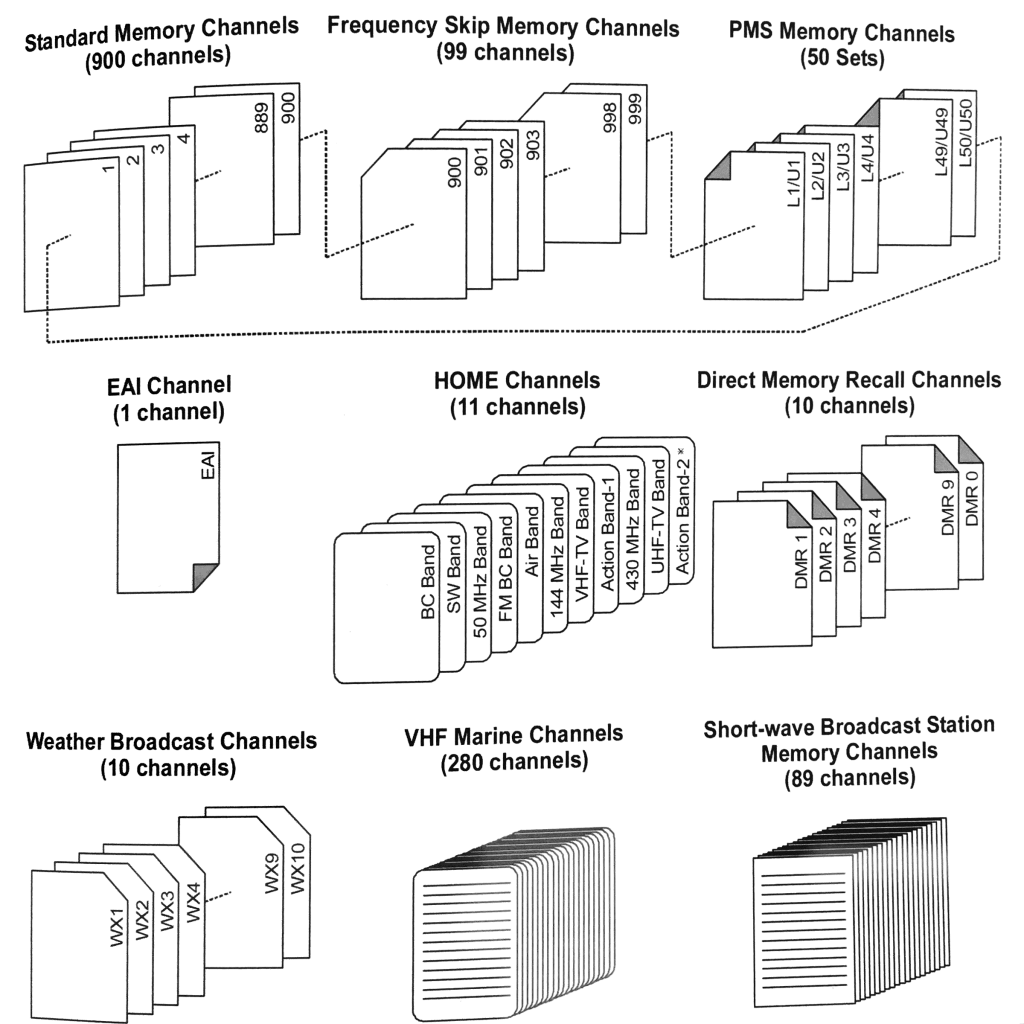
The VX-6R’s scanning mode is also quite robust, though I will say it is a slight headache to program it. It’s blazing fast, thats for sure. Long story short, if you’re willing to put in the time to program the scanner, it will do just about anything for you, not to mention it can pick up anything from 500kHz to 999MHz! As for me, I just have it run a normal scan on whichever memory bank I’m searching, and when I hear something I wan’t to listen to further, a quick tap of the PTT stops the search without engaging the transceiver.
One feature that I really like about the VX-6R is it’s S-meter/RF squelch. I realize it’s not unique to the VX series by any means, but I think it’s a simple addition to any HT that is very useful. To start, the S-meter is very readable, spanning much of the screen’s width, with metered numbers along the way. When engaging the RF squelch you can select S1-S9, S9+, or OFF. It’s that simple–your speaker will not engage unless the radio is receiving a signal above your determined signal level! Easy.
Into the Depths
Besides having just about every possible user setting under the sun, the Yaesu VX-6R also offers plenty of innovative or next-generation features. While not necessarily new, the ARTS (Automatic Range Transponder System) functionality gives users the ability to stay within range while operating in a field environment. Tools like this are brilliant for folks involved in Search and Rescue efforts, or any situation where ‘lo-fi’ operations are necessary (no cellphone/GPS.) I also think new developments like ARTS are what make companies–especially Yaesu–stick out. It shows that they aren’t just concerned about popping out new radio models every so often, but they actually want to develop the industry and to create products that solve users’ problems. Very cool.
A feature I’mnot in love with is the Barometer feature. You can purchase a separate sensor, the SU-1, which essentially adds a barometric pressure sensor and thermometer to your device. It’s a small piece that the user installs into the backside of the battery compartment. Personally, I think it’s a redundancy that most people could do without. Sure, it makes for great marketing: “Perfect for the backpacker or hiker!” But is it really so practical? The only people who are seriously into outdoor sports will probably opt for a more high-tech, easier-to-read barometer watch (like the Suunto Core.) Barometric pressure readings can certainly help in weather forecasting, but wouldn’t you rather use a more accurate, specialize sensor, if forecasting is really your intent? It also requires using the same screen to take barometric pressure readings as you would for operating on the air. Ultimately, its a cool idea, I just don’t think it’s worthwhile. (If you feel different, by all means please share your thoughts!)
WiRES II Capability
One of the reasons you may be interested in the VX-6R is its WiRES II internet connection capability. I won’t go too in-depth with this feature because it really deserves its own article/review, but know that it is there. If you want a radio that is WiRES II capable, the VX-6R is. Other than that, I promise to put the WiRES II functionality into my queue!
Finally, in case you thought Yaesu couldn’t pack anything more into this radio, they add a ‘CW Trainer’. Yep. It’s in all of their VX-series models. My advice? If you really want to learn Morse Code, download a smartphone app–there are plenty of them out there and they will be easier to use for practicing Morse than an HT!
Wrapping It Up
The Yaesu VX-6R is a packed radio. It has worked wonderfully for me while I have used it, and I really think it’s a great ‘all around’ radio. If you’re brand new to ham radio and you want to purchase something that can be grown into, this could be your radio. So long as you don’t let yourself become overwhelmed by features, the VX-6R would be great for learning and will continue to serve you as your interest and operational requirements grow. Maybe you’ve been on the air for years and you’re looking to replace an old HT–I ESPECIALLY think this radio would be suitable for you. The buttons and menus are easy to access, and I think you’ll appreciate the amount of programmability on this radio.
About this Review
Hopefully this review has been helpful to you! I’m certainly not a technical expert, but getting my hands on various equipment and considering it from a “user’s” point of view is something I like to do! Sometimes its just beneficial to hear what the ‘average guy’ thinks about a product. If at this point you are interested in purchasing the VX-6R, it would mean a lot to me if you clicked on one of the links on this page! I take a small cut out of any purchase you may make and it allows me to continue writing reviews!
Thanks for reading, and I’m all ears to any comment you leave below! If you have any questions about the product, feel free to ask–I’ll respond as quickly as possible.
| Yaesu VX-3R | Yaesu VX-6R | Yaesu VX-8DR | |
|---|---|---|---|
| Price | $154.99 | $246.49 | $357.98 |
| Tx Bands | 2m/440 | 2m/220/440 | 6m/2m/220/440 |
| Max Power | 1.5 watts | 4 watts | 5.5 watts |
| Battery Type | Li-ion | Li-ion | Li-ion |
| Battery Power | 1000 mAh | 1800 mAh | 1900mAh |
| Speaker Power | 50mW | 1000mW | 750mW |
| CTCSS | Yes | Yes | Yes |
| CTCSS | Yes | Yes | Yes |
| DTMF | No | Yes | Yes |
| Height | 3.75 in. | 4.25 in. | 4.25 in. |
| Weight | 136g | 268g | 254g |

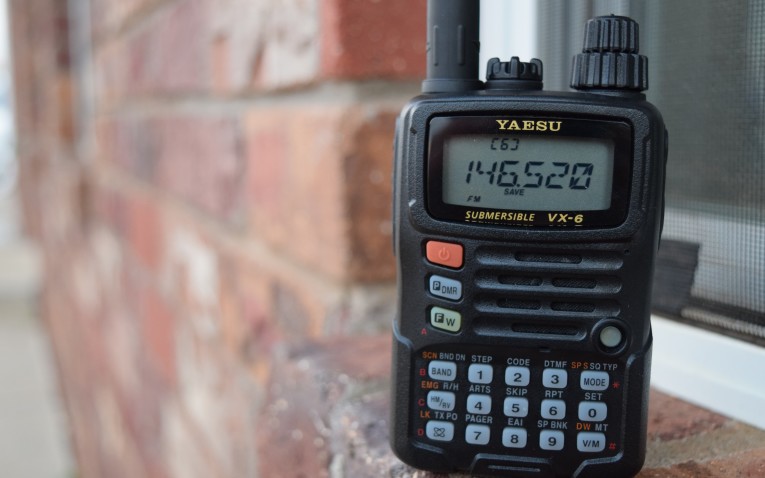
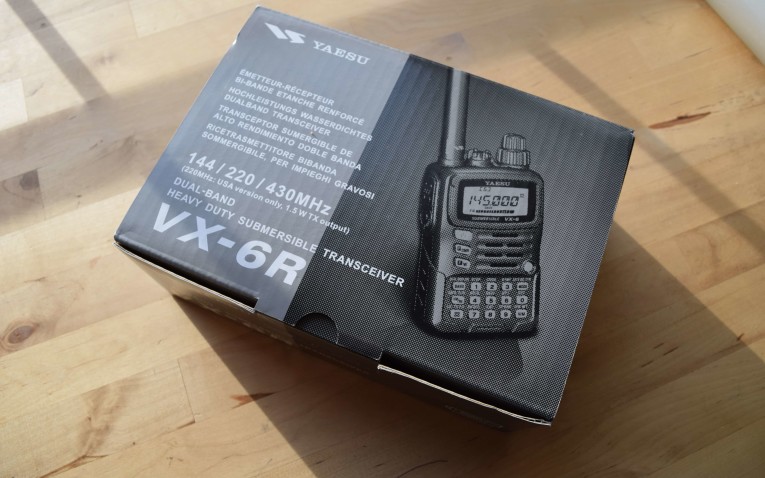
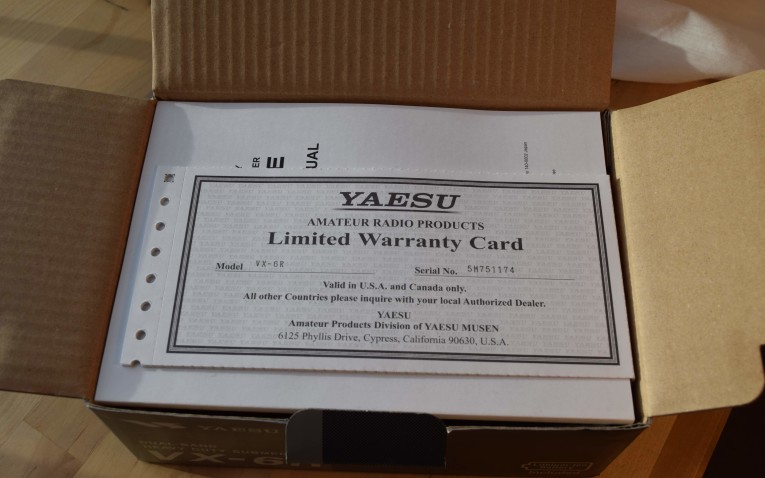
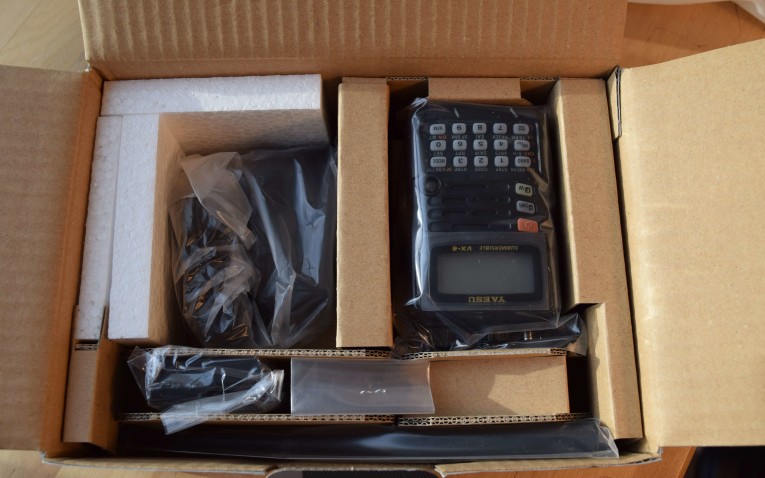

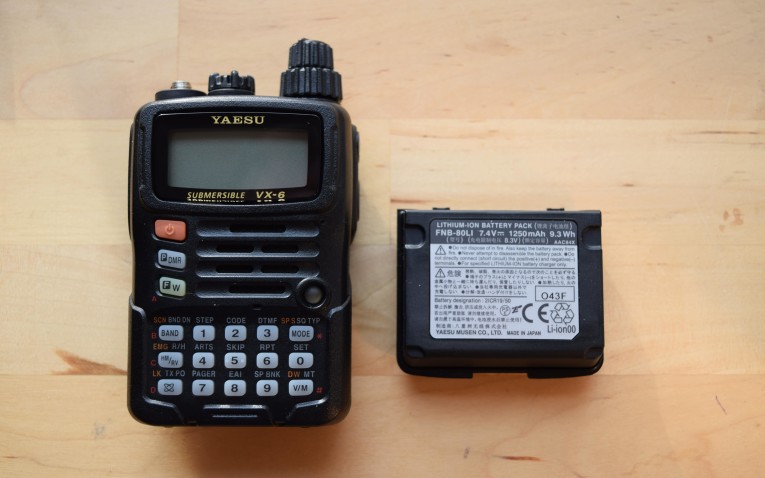
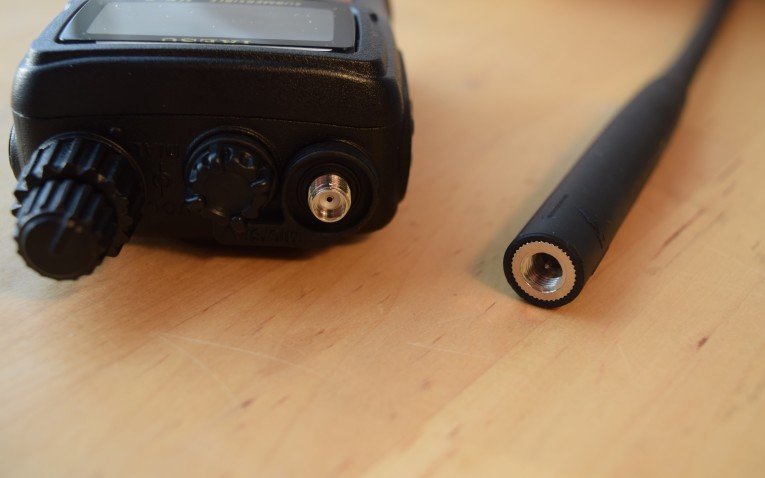

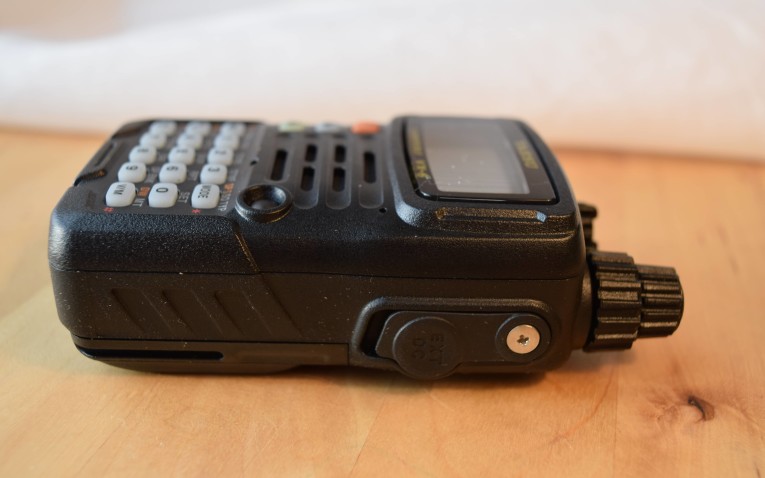
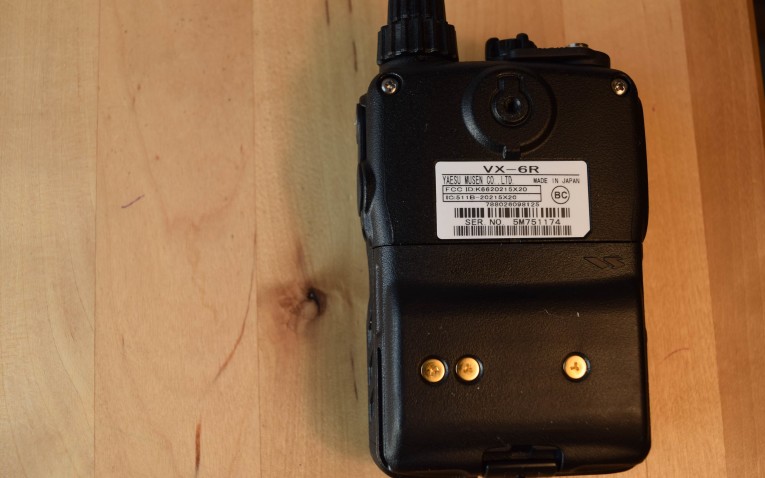
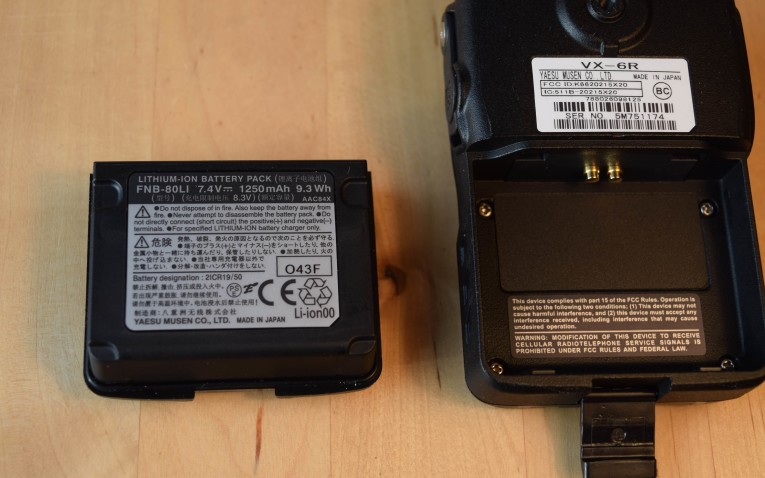
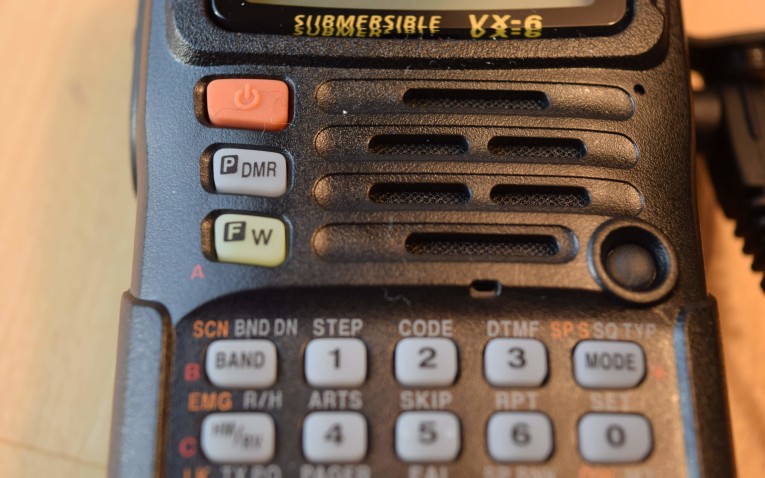
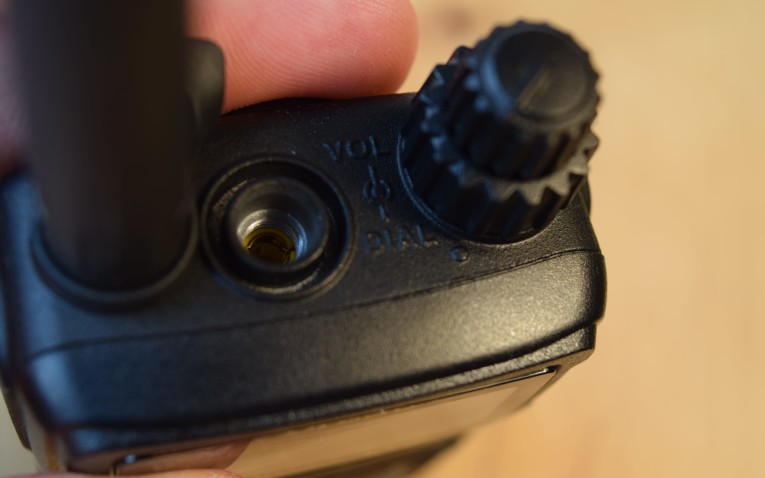

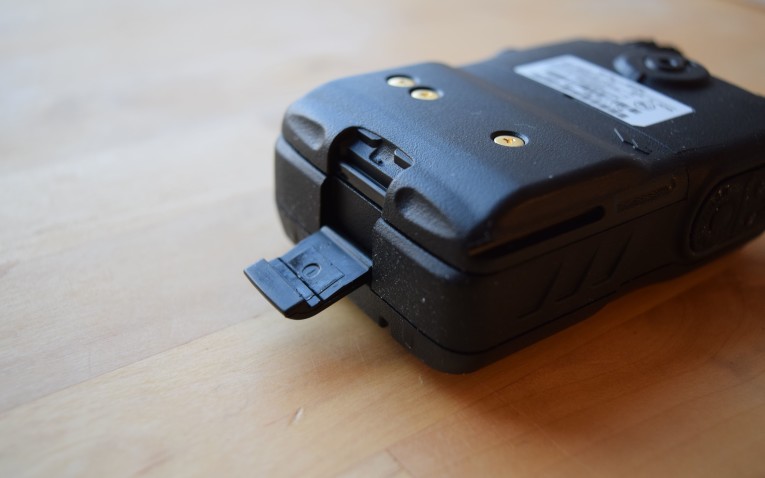
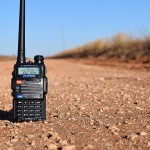

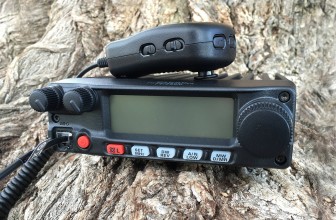
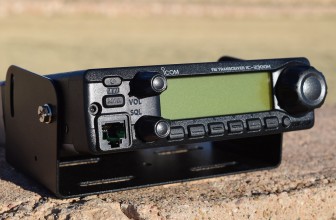

Good review. What do you think of the speaker output? I’ve read one review where they had a problem with low volume on a frequency. They said switching to mono improved that. I have not come across that when listening. I passed the technicians exam Sept. 11 and now I’m waiting for my name to appear in the database so I can use the VX-6R I just purchased. I was torn between this and the VX-8DR. Once I realized you need to buy the GPS unit to use APRS on the VX-8DR, it made it easier to go with VX-6R. I have an old Android, UV-5R and Mobilinkd that I will use for APRS.